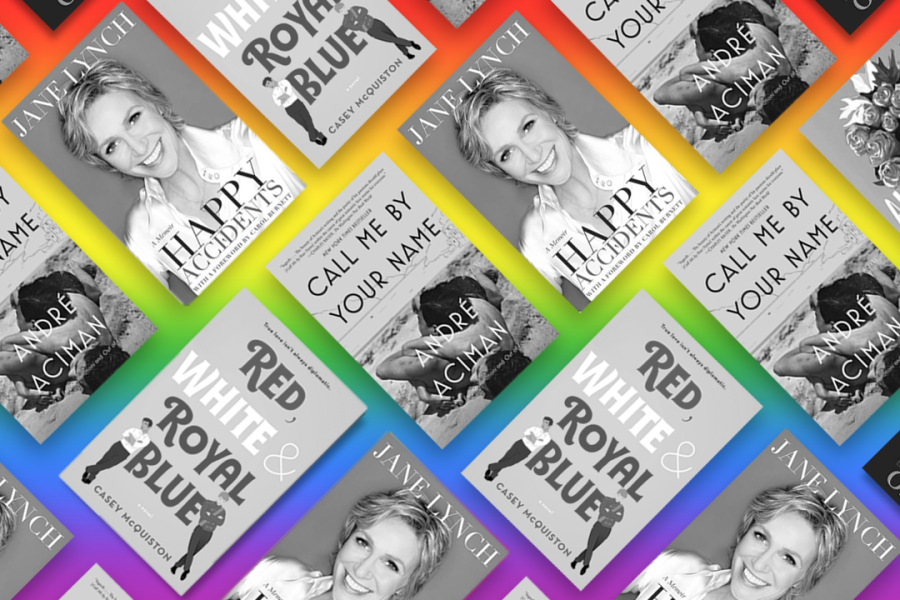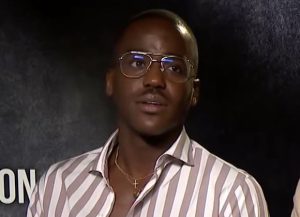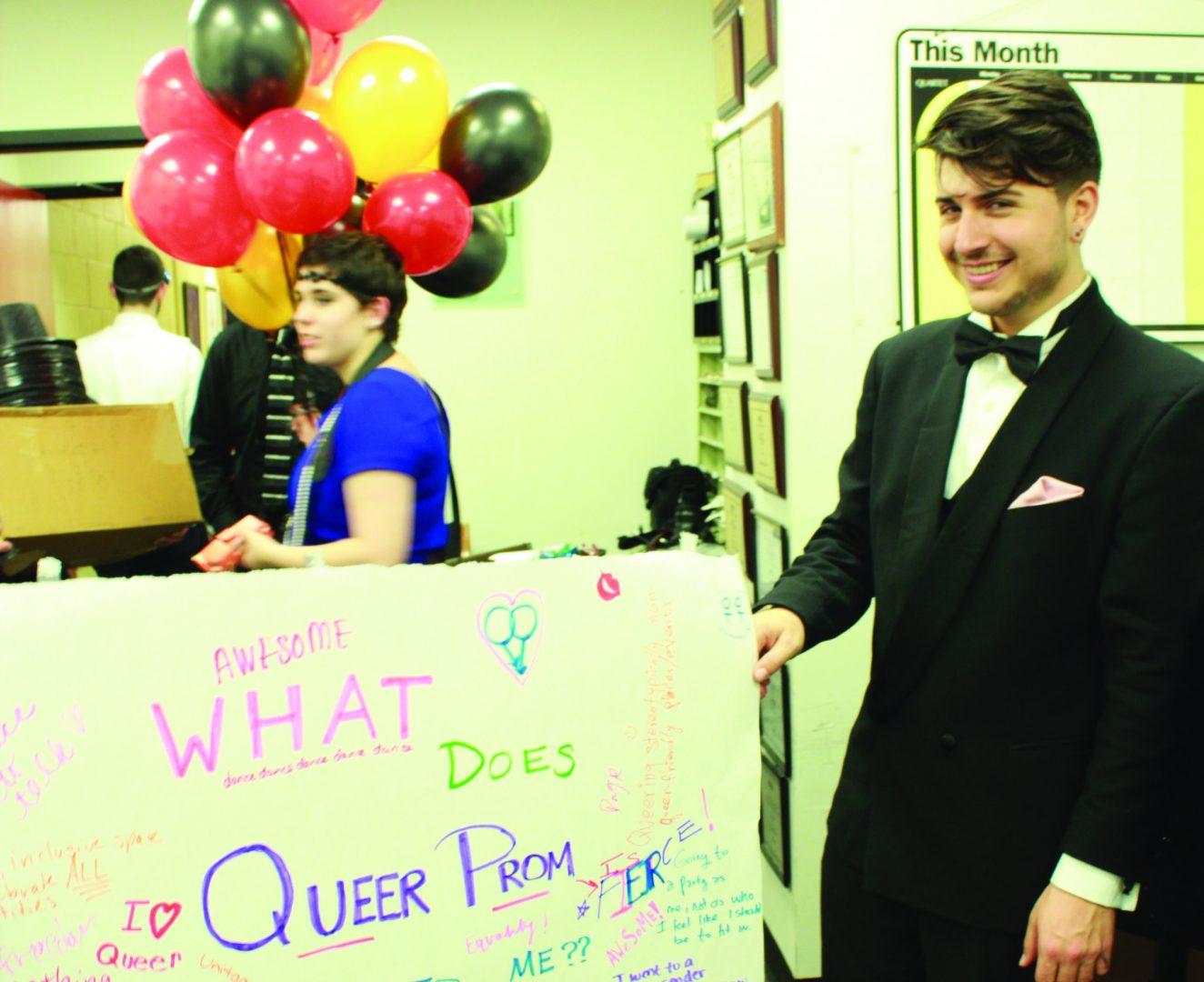Fordham Must Expose Students to the Gay Agenda
Five books that Lincoln Center administrators can use to help incoming students be out and proud
March 22, 2023
The Fordham Lincoln Center (FLC) administrators, faculty and students alike are eager to see what the Class of 2027 will look like. While there is plenty of room to see many marginalized groups better represented on campus, we need not worry about the LGBTQ+ community. We already know that many, many students at FLC will be queer.
This year, let’s focus on letting the student body grow together. Even the few — dare I concede they exist — straight students at FLC would greatly benefit from exploring issues of gender and sexuality as the upcoming class prepares for college. Banned books, increasing legislation seeking to protect students from the gay agenda, and the conservative curriculum requirements of a few United States states have prevented many students from exploring these topics outside of the internet. We need more references than just our school bullies and Tumblr partners to draw upon before reaching college.
Students should have opportunities to talk about gender and sexuality in a group setting in order to become comfortable with their identities and be able to express themselves freely. It should not just be a conversation you have with your English teacher after class where you overshare until you inadvertently out yourself. (Thank you Mrs. Lowe, and sorry if it made you uncomfortable.)
Many incoming college students might have a lot in common with Oscar Wilde: in the closet but itching to come out.
Remember the book that we all definitely read the summer before starting our first year? Colleges need to pick up the slack, and Fordham has a prime opportunity with its annual class book selection. This year, I have created a list of some contenders that can compensate for the repressed queer high school experience:
1.“The Picture of Dorian Gray” by Oscar Wilde
Many incoming college students might have a lot in common with Oscar Wilde: in the closet but itching to come out. Wilde carefully pushes the limits of friendship and romance in what is a very early form of queer literature. The novel centers around a portrait that Dorian’s friend paints of him, as he is in love with Dorian. In the book, Dorian trades his soul to remain young and beautiful while his portrait ages. The events of the book make it a prime English classroom read: the destruction of innocence, a warning against pride (ha, gay joke), and covert discussions of sexuality can pave the way for countless classroom discussions. High schools have worked hard to make sure that this steamy, breath-quickening, knee-boggling work did not make its way into the hands of students who are far too eager to read yet another piece of nineteenth-century literature. So, it’s Fordham’s job to make sure that students are comfortable discussing the salacious topics of this Gothic literature classic in a Socratic seminar.
2. “Happy Accidents” by Jane Lynch
Jane Lynch is a famous comedian, actress and game show host. She is also a ruthless and vindictive cheerleading coach, a talk show anchor and the Vice President of the United States (at least I think “Glee” is based on true events). Having the incoming class read her memoir would allow us to not forget her main identity: lesbian. By stripping her of her individual accolades and triumphs as a public figure, students have a prime opportunity to recognize that lesbians are real and among us — a fact they are likely to have missed in high school because they were too busy reading about straight men. Some lesbians even reach fame in spite of hardship! Lynch is one example. Oh, and Ellen DeGeneres! There are probably some other famous lesbians, but I’ve never heard of them. Try harder, lesbians!
Reading about how sexuality can serve as an obstacle and a motivator from the perspective of a queer public figure who achieved fame and embraced the hardships she faced along the way would spark meaningful discussion among many students who have felt that their sexuality was something to hide or downplay prior to attending college.
Reading about how sexuality can serve as an obstacle and a motivator from the perspective of a queer public figure who achieved fame and embraced the hardships she faced along the way would spark meaningful discussion among many students who have felt that their sexuality was something to hide or downplay prior to attending college.
3. “All Boys Aren’t Blue” by George M. Johnson
I really love memoirs … I think reading other people’s lived experiences keeps my narcissism in check. In case lesbians are too outrageous, I want to offer a calmer suggestion. Johnson’s memoir offers the perspective of a queer Black man who spent his adolescence in New Jersey and Virginia. Shockingly, his childhood wasn’t all roses! Beyond detailing the struggles of spending a large portion of his life in New Jersey, Johnson’s work opens up discussions of the intersectionality of race and gender identity, family, consent and sexuality, and toxic masculinity. Detailing experiences such as bullying he faced, flea marketing with his grandma, and his first sexual encounter, Johnson’s memoir highlights the highs and lows of growing up as a queer Black student. When discussing this work, students can unite as they read about trauma. I would love to find a work that shows how fun it is to have intersectional marginalized identities, but those aren’t being published for some reason. Maybe those works are hiding with the lesbians. For now, growing pains and coming to yourself seem to define queer culture, and this work is a perfect reflection of that.
4. “Red, White & Royal Blue” by Casey McQuiston
This work centers on love knowing no bounds. The First Son of the United States falls in love with a British prince, and the two scheme to make a relationship work despite the messiness of international politics. Honestly, I understand why parents would want to protect their children from this story. It is vile in its wholesomeness. Reading a gay romance that centers around how beautiful love can be is meant for more mature audiences (those in relationships).
It is painful to be single, watch the characters fall in love, then ask “when is it my turn?” Yet, it would be very rewarding to connect with fellow students and marvel at how far queer literature has come that we can read a book that celebrates love. The book may instill loneliness and depravity among the student body, but it will also bring unity.
5. “Call Me by Your Name” by André Aciman
For students reading while in summer break mode, this romance could compliment a cold glass of Sprite on the beach. Set in a mansion on the Italian Riviera, this work explores a budding intimacy between a 17-year-old Italian boy and a 24-year-old American visitor to his family’s home. Young Timothée Chalamet (I forget the character’s name) and Armie Hammer (sorry, I didn’t study up before writing this suggestion) spend six weeks falling in love while knowing that the American would ultimately leave.
The story raises concerns about the difference in age between the characters, the challenges that queer relationships face that lead to such problems, and the limiting social norms that can make it difficult to have a traditional relationship. One big reason that this work is a strong candidate is that it could draw in some nonreaders. Who wouldn’t want to watch Chalamet in a movie and pretend that they’re viewing it for school? The movie isn’t the same as the book, but it is close enough that students who watch the movie can still engage in literary conversation. In fact, I pose this suggestion having only watched the movie, but I bet you couldn’t tell.
Fordham administrators have a big undertaking this year: overcompensate for my losses prior to college. To combat laws targeting high schools, it is now the university’s job to ensure that these discussions are not foreign in college classrooms and to reassure students that their identities are valid and worthy of discussion. No longer will incoming college students have to use the internet to see if gay people are real — they will have assigned summer reading to show that they are. Let’s get these books out of the closet and into the hands of the impressionable youths that are blissfully unaware of the gay agenda.













